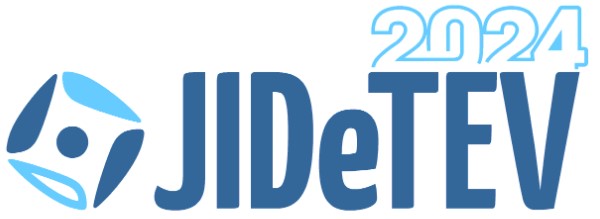Discrepancias en la Distorsión del Tiempo en la Teoría General de la Relatividad.
Contenido principal del artículo
Resumen
Este trabajo evalúa las discrepancias en la distorsión gravitacional del tiempo cerca de la Tierra y propone un método novedoso para explicar el corrimiento al rojo, en el tiempo, respecto a lo que predice la relatividad general. A mayores alturas en el campo gravitacional terrestre el tiempo transcurre más rápido, y se mide con gran precisión gracias a los relojes atómicos que permiten relacionar la variación de frecuencia de emisión de átomos con el paso del tiempo. El estudio se basa en el parámetro α del Formalismo Post-Newtoniano de Clifford Martin Will para cuantificar desviaciones respecto a la relatividad general, también usa la solución exacta de las ecuaciones de campo de Einstein de acuerdo a Karl Schwarzschild para un campo gravitatorio fuera de un cuerpo no giratorio y esféricamente simétrico. Las muestras de α se toman de experimentos en satélites Galileo, satélites de posicionamiento global (GPS) y RadioAstron. Se incorporan también mediciones del cohete Gravity Probe A y en la Torre Tokyo Skytree. Los resultados muestran una discrepancia positiva del orden de 10-5. Esto implica que la diferencia de frecuencia fraccional entre relojes atómicos es generalmente mayor a lo esperado. Nuestro análisis ofrece una nueva perspectiva sobre la validez de la relatividad general y la necesidad de considerar posibles ajustes teóricos.
Detalles del artículo
Usted es libre de:
Compartir— copiar y redistribuir el material en cualquier medio o formato para cualquier propósito, incluso comercialmente.
Adaptar— remezclar, transformar y construir a partir del material para cualquier propósito, incluso comercialmente.
La licenciante no puede revocar estas libertades en tanto usted siga los términos de la licencia
Bajo los siguientes términos:
Atribución— Usted debe dar crédito de manera adecuada, brindar un enlace a la licencia, e indicar si se han realizado cambios . Puede hacerlo en cualquier forma razonable, pero no de forma tal que sugiera que usted o su uso tienen el apoyo de la licenciante.
No hay restricciones adicionales — No puede aplicar términos legales ni medidas tecnológicas que restrinjan legalmente a otras a hacer cualquier uso permitido por la licencia.
Referencias
Einstein, A. (1911). Über den Einfluß der Schwerkraft auf die Ausbreitung des
Lichtes. Annalen der Physik, 340(10), 898-908.
Einstein, A. (1917). On the special and general theory of relativity. CPAE (English translation), 6, 247-420.
Pound, R. V., &; Rebka Jr, G. A. (1960). Apparent weight of photons. Physical review letters, 4(7), 337.
Pound, R. V., &; Snider, J. L. (1964). Effect of gravity on nuclear resonance. Physical Review Letters, 13(18), 539.
Vessot, R. F. C., &; Levine, M. W. (1979). A test of the equivalence principle using a space-borne clock. General relativity and gravitation, 10, 181-204.
Vessot, R. F., Levine, M. W., Mattison, E. M., Blomberg, E. L., Hoffman, T. E., Nystrom, G. U.,... &; Wills, F. D. (1980). Test of relativistic gravitation with a space-borne hydrogen maser. Physical Review Letters, 45(26), 2081.
Vessot, R. F. (1989). Clocks and spaceborne tests of relativistic gravitation. Advances in Space Research, 9(9), 21-28.
Delva, P., Puchades, N., Schönemann, E., Dilssner, F., Courde, C., Bertone, S., ... &; Wolf, P. (2018). Gravitational redshift test using eccentric Galileo satellites. Physical review letters, 121(23), 231101.
Herrmann, S., Finke, F., Lülf, M., Kichakova, O., Puetzfeld, D., Knickmann, D., ... &; Lämmerzahl, C. (2018). Test of the gravitational redshift with Galileo satellites in an eccentric orbit. Physical review letters, 121(23), 231102.
Takamoto, M., Ushijima, I., Ohmae, N., Yahagi, T., Kokado, K., Shinkai, H., &; Katori, H. (2020). Test of general relativity by a pair of transportable optical lattice clocks. Nature photonics, 14(7), 411-415.
Fathollahi, L., Wu, F., &; Pongracic, B. (2023). Gravitational redshift test using Rb clocks of eccentric GPS satellites. Heliyon, 9(2).
Kulbiej, E. (2016). “Relevance of the relativistic effects in satellite navigation”. Zeszyty Naukowe Akademii Morskiej w Szczecinie, (47 (119), 85-90.
Einstein, Albert. (1916) “Die Grundlage der allgemeinen Relativitatstheorie”. ANNALEN DER PHYSIK.
Janssen, M., &; Renn, J. (2021). Einstein and the perihelion motion of mercury. arXiv preprint arXiv:2111.11238.
Nunes, N. V., Bartel, N., Belonenko, A., Manucharyan, G. D., Popov, S. M., Rudenko, V. N., ... &; Bietenholz, M. F. (2023). Gravitational redshift test of EEP with RadioAstron from near Earth to the distance of the Moon. Classical and Quantum Gravity, 40(17), 175005.
Frisch, D. H., &; Smith, J. H. (1963). Measurement of the relativistic time dilation using μ-mesons. American Journal of Physics, 31(5), 342-355.
Shankland, R. S. (1964). Michelson-morley experiment. American Journal of Physics, 32(1), 16-35.
http://hyperphysics.phy-astr.gsu.edu/hbasees/Relativ/Ltrans.html
Will, C. M. (2018). Theory and experiment in gravitational physics. Cambridge university press.
Will, C. M. (2014). The confrontation between general relativity and experiment. Living reviews in relativity, 17(1), 1-117.
Delva, P., Hees, A., Bertone, S., Richard, E., &; Wolf, P. (2015, March). Test of the gravitational redshift using Galileo satellites 5 and 6. In Rencontres de Moriond, Gravitation: 100 years after GR.
Will, C. M. (1971). Theoretical frameworks for testing relativistic gravity. III. Conservation laws, Lorentz invariance, and values of the PPN parameters. Astrophysical Journal, vol. 169, p. 125, 169, 125.
Thorne, K. S., &; Will, C. M. (1971). Theoretical frameworks for testing relativistic gravity. I. Foundations. Astrophysical Journal, vol. 163, p. 595, 163, 595.
Will, C. M. (2014). The confrontation between general relativity and experiment. Living reviews in relativity, 17(1), 1-117.

